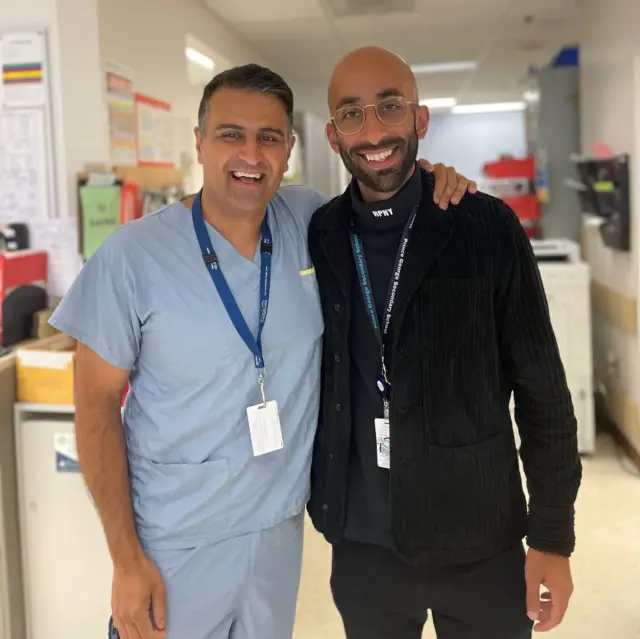2025/26

Neurologic Biomarker Guided Prediction of Time to Death Determination in Donation after Circulatory Death Donors
Organ donation can only commence once death has been declared in a potential donor, however, the prediction of how quickly death will occur following removal of life support interventions is unclear.
Further, the longer the duration between the removal of life support and death declaration, the more the potential organs that are eligible to be transplanted become injured from low blood flow and oxygen levels during the dying process.
The prediction of the dying duration, trajectory and whether organ donation will be successful is extremely limited. Robust, generalizable and reproducible methods for this prediction are needed to inform donation and transplant teams as well as patients and their families.
The brain controls various vital functions of the human body. Relative to organ donation, severe brain dysfunction can accelerate the dying duration by leading to upper airway compromise or by leading to decreased heart function (because the brain controls the heart’s internal drive). Quantifying and assessing these dynamics in prospective organ donors are an essential step to develop a clinical prediction tool.
The team will conduct a multicenter prospective observational study to assess the use of a non-invasive brain blood tests to predict the time to death in organ donors. Specifically, they will assess the ability to
conduct these blood tests across multiple hospitals in Canada and whether their accuracy in predicting the dying duration is equivalent across institutions. Using non-invasive, generalizable and pragmatic blood tests the team hopes to create a new and novel prediction tool of the dying duration and assess it against the currently available modest prediction variables.
Primary Investigator: Drs. Sonny Thiara and Myp Sekhon
Co-investigators: Jordan Bird, Laura Hornby, Dr. Cheryl Wellington, Dr. Andrew Wormsbecker, Dr. Anish Mitra, Dr. Andrew Seely and Dr. Sonny Dhanani
Patient Partner: Ms. Carmen Choi and Mr. and Mrs. Peeler
For an up-to-date list of publications by Dr. Mypinder Sekhon, please see ResearchGate
For an up-to-date list of publications by Dr. Sonny Thiara, please see ResearchGate

Patient and Physician Perspectives on Cardio-Kidney-Metabolic therapies in Kidney Transplantation
Kidney transplant recipients (KTR) often face significant health challenges, including heart and kidney problems. New treatments, such as sodium- glucose cotransporter inhibitors (SGLTi), glucagon-like peptide 1 receptor agonists (GLP1RA), and nonsteroidal mineralocorticoid receptor antagonists (nsMRA), have shown promise in improving heart and kidney health. These therapies act through different mechanisms, so combined, they may provide greater improvements and benefits than using any one treatment alone. However, these treatments are still emerging, and it is not yet clear how they work together or what the best approach is for using them in KTRs.
The goal of this study is to explore which factors are most important to KTRs and doctors when considering the combined use of all these treatments within the first several months after kidney transplant. These factors could include concerns about potential side effects, how well the treatments work together, or how they fit into the daily lives of transplant recipients. By gathering input from both KTRs and healthcare providers, the study hopes to better understand how to make treatment decisions that will improve patient health and quality of life.
Ultimately, the findings from this study could guide future clinical trials of these treatments and help doctors and patients make more informed choices about managing heart and kidney complications after
a kidney transplant. Understanding the preferences and needs of KTRs is essential for developing personalized, effective treatment strategies that benefit both their short-term and long-term health.
Primary Investigator: Dr. Vikas Srinivasan Sridhar
Co-investigators: Dr. John Gill, Dr. Jagbir Gill, Luxica Kugathasan, Dr. Sunita Singh, Dr. David Cherney, and Dr. Ayodele Odutayo
Patient Partner: Mr. Kyle Hamilton, Mr. Dave Dickson and Dr. Kamal Joshi
For an up-to-date list of publications by Dr. Vikas Srinivasan Sridhar, please see ResearchGate

Characterizing the Physiology of Hepatic Ischemia-Reperfusion Injury in Circulatory Death and Normothermic Regional Perfusion: A Feasibility Study
The need for liver transplantation to treat severe liver diseases is growing in Canada, yet the number of available donor organs remains insufficient.
Donor livers can come from patients who have suffered brain death, or cardiac death. Donation after cardiac death is a relatively new development.
Although cardiac death donors have resulted in increased organ availability, livers from cardiac death donors are more prone to complications associated with low oxygen levels during donation. Studies suggest that a promising technique called normothermic regional perfusion (NRP) may help restore oxygen levels and improve the quality of these livers before they are transplanted. Unfortunately, we don’t fully understand how NRP affects the liver’s normal functions during this process.
This research project aims to investigate the specific changes that occur in the liver during NRP. To start, the team will investigate how decreased oxygen levels correlate with donor liver inflammation, how NRP impacts donor liver inflammation, and if any change in inflammation leads to an improvement in donor liver quality. By gaining a better understanding of these changes, it is hoped to discover ways to further enhance the quality of transplanted livers and improve the outcomes for recipients. Throughout this research, patient, family, and donor partners will be involved to ensure that the study addresses what is most important to them.
Primary Investigator: Dr. Daljeet Chahal
Patient Partner: Brenda Franner
For an up-to-date list of publications by Dr. Daljeet Chahal, please see ResearchGate

